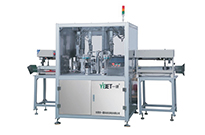
Indwelling needle puncture obviously good blood return, but the hose is always not smooth, what is the reason? Does it have to be re-pierced?
Case introduction
Little A has been working for less than a year, and recently when she performed indwelling needle puncture, she encountered a thorny problem, which is as follows: After the puncture found blood return, she lowered the Angle and continued to inject the needle 2mm, and withdrew the needle core with one hand, but the hose could not be sent in, and the blood was not returned.
Despondent, she was about to remove the indwelling needle when senior nurse B came over and saw her trying to withdraw the needle while Little A gently withdrew it for her. When she retreated to a certain position and blood return suddenly became smooth, she was in this position, along the trend of the blood vessel, gently sent the catheter, and then pumped back, there was blood return, pushing the saline injection, no resistance, pumped back again, still saw blood return, completely withdrew from the needle core. Fixed. Fluid was successfully replenished. Little A said to B afterwards, "Teacher, can you teach me how to fix it?" What's the trick?"Case study
In clinical work, we often encounter similar cases, the patient's vascular conditions are not good, finally find a section of blood vessels, the direction is not particularly clear, clearly see the needle return blood is very good, send the hose is not smooth, what is the reason?
1. See the blood return, immediately withdraw the needle core and send the hose. This process may be because the tip of the steel needle is in the blood vessel, while the tip of the catheter is not in the blood vessel, resulting in poor hose delivery.
2. After the blood return, reduce the Angle and continue to insert the needle by 2mm and retract the needle core by 2-3mm. The hose delivery is not smooth, possibly because the needle insertion Angle is too large and the steel needle punctures the back wall of the blood vessel, resulting in the indwelling needle not being in the blood vessel and the hose delivery is not smooth.
Summary of experience
What can we do to remedy the above situation?
1. Do a good job of communication and explanation to the patients and their families, and obtain their trust and cooperation.
2. The vascular condition is good, the needle core is receded 2-3mm, and the indwelling needle heparin cap is connected to the syringe containing 5ml normal saline. Hold the catheter holder of the indwelling needle and slowly withdraw the needle while asking others to gently withdraw the indwelling needle with a 5ml syringe. When the indwelling needle is withdrawn to a position where blood return is smooth, immediately send the indwelling needle hose gently into the blood vessel along the direction of the blood vessel, withdraw and push the injection, and make sure that it is in the blood vessel, completely withdraw the needle core and fix it.
3. The blood vessels are thin and brittle, and the needle core is completely withdrawn, leaving only the indignant needle hose. When the above method is withdrawn to the place where the blood return is particularly smooth, the indignant needle hose is gently sent into the blood vessel along the direction of the blood vessel. If the catheter withdraws too long to feed, a sterile cotton swab dipped in saline can be used to feed the hose bit by bit along the blood vessel.
Why are there cases of remedial failure?1. Similar to the first reason above, the hose is not smooth, and no matter how the needle is withdrawn, the blood will not be drawn back, and it is doomed to failure.
2. The patient's circulation condition is not good, the blood vessels are not full, or the original puncture is the capillary, which may also lead to the failure of remediation.
Are there any precautions during operation?
1. Do a good job of communication and explanation with the patient and his family members, get cooperation, and inform them that only the hose is left in the blood vessel, which will not hurt very much. If the remedy is successful, the pain caused by re-puncture can be reduced, and if the patient or family does not allow it, the operation is stopped immediately and the indwelling needle is removed.
2. Be sure to send it gently along the direction of the blood vessel, and do not force it into, if you encounter resistance in the process of sending the hose, stop immediately to avoid aggravating the pain of the patient.3. For patients with coagulation dysfunction, extremely low platelets, hemophilia, etc., avoid taking this method to avoid causing large hematoma.
The use of indwelling needles reduces the pain and fear caused by daily venipuncture, but repeated unsuccessful puncture also brings pain to patients, and leads to their distrust, anxiety and other emotions. Through the above remedial measures, to improve the success rate of indentation needle puncture, reduce the pain of patients, but also improve their trust and satisfaction with us, it is a good method worthy of clinical promotion.
About us
Company Profile Honor Typical Case Corporate imageEquipment display
Powder forming class Medical devices Non standard customized equipmentNews Center
Company News Industry News FAQContact us
TEL: +86 0769-82263072 Contacts: +86 139 2924 7077/Mr. Wei Email: 13929247077@139.com Address: No. 31, Hulin Road, Huaide Community,Focus on us
 YeJet Mobile Station
YeJet Mobile Station WeChat official account
WeChat official account